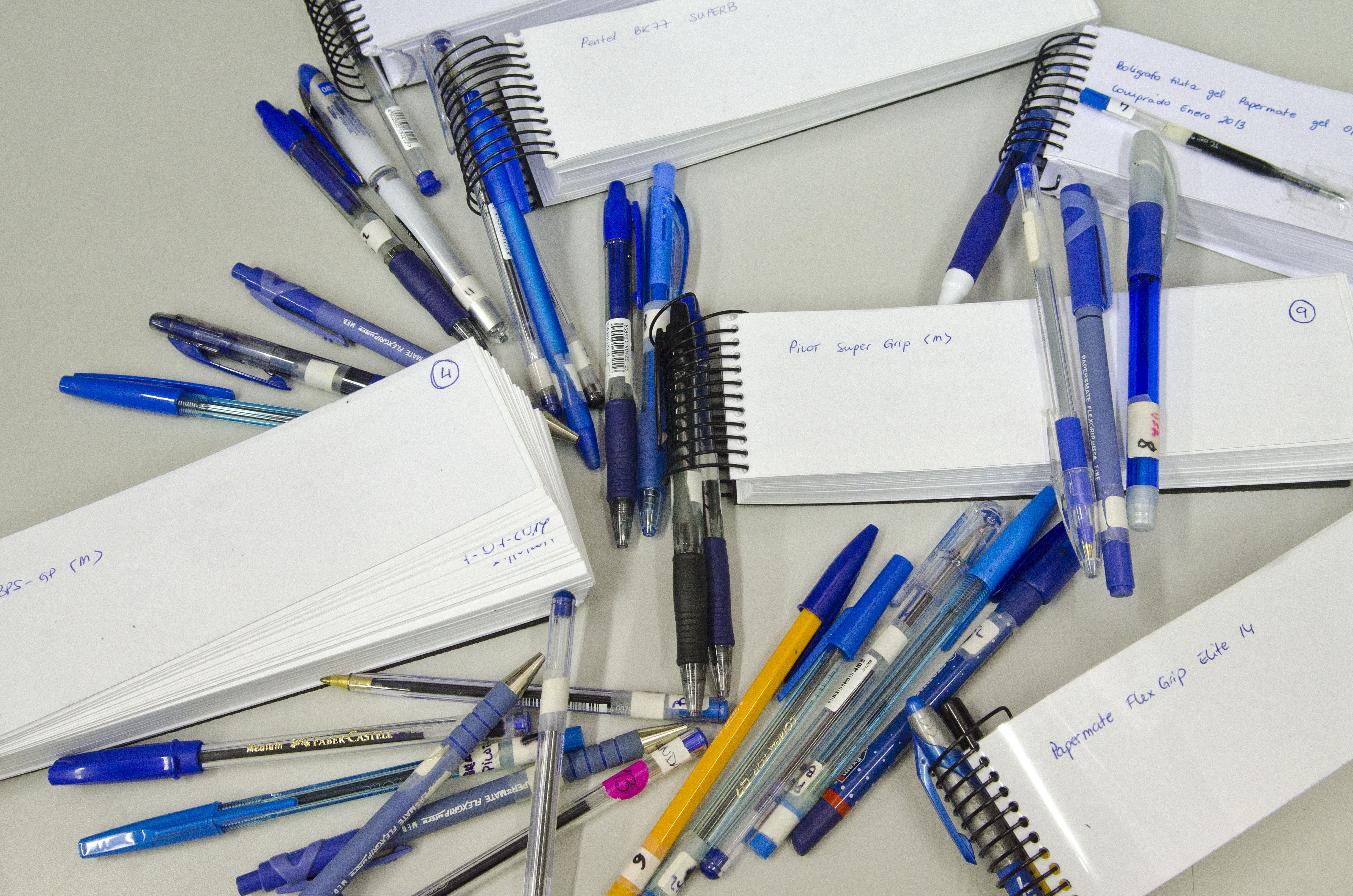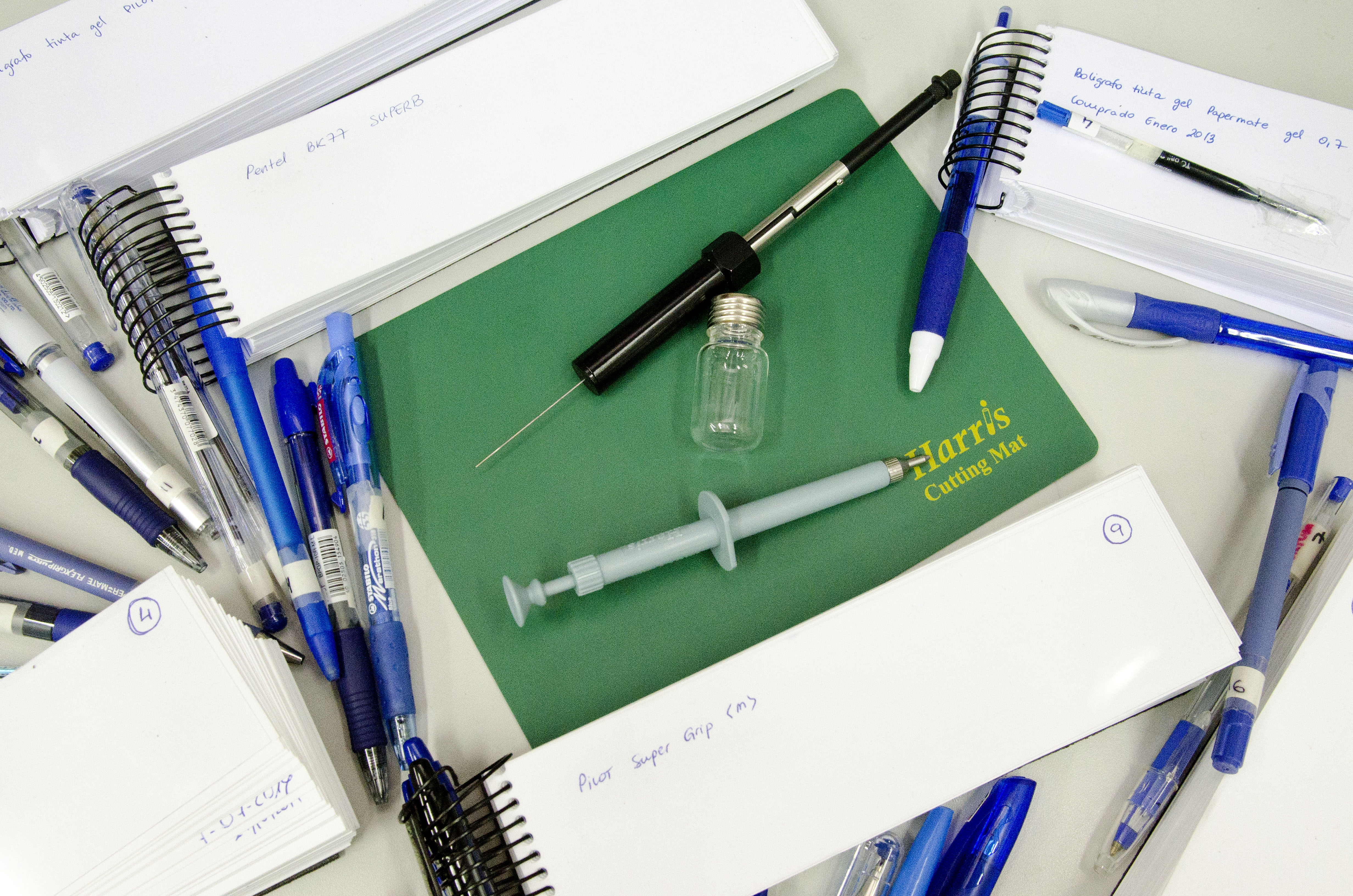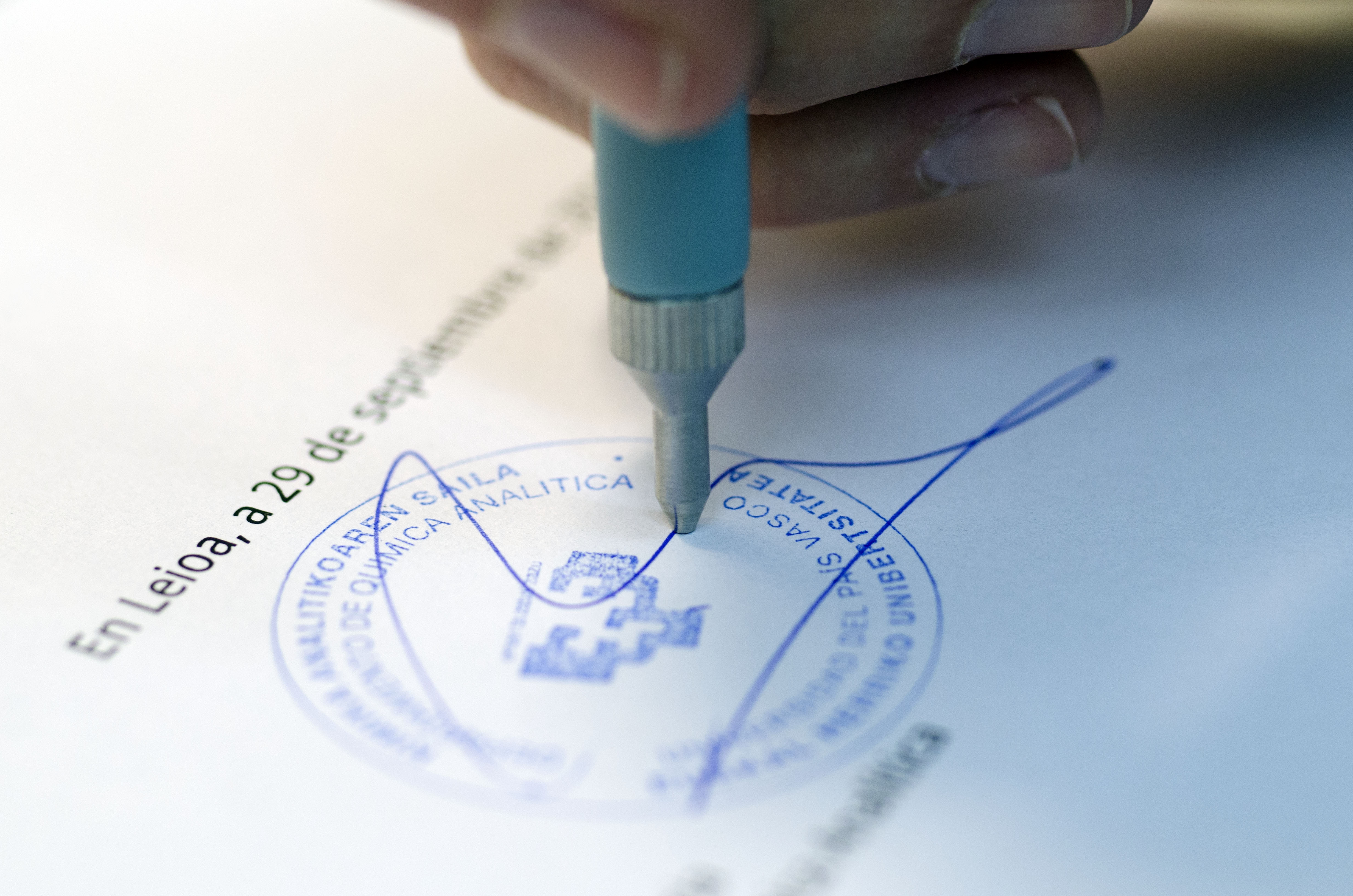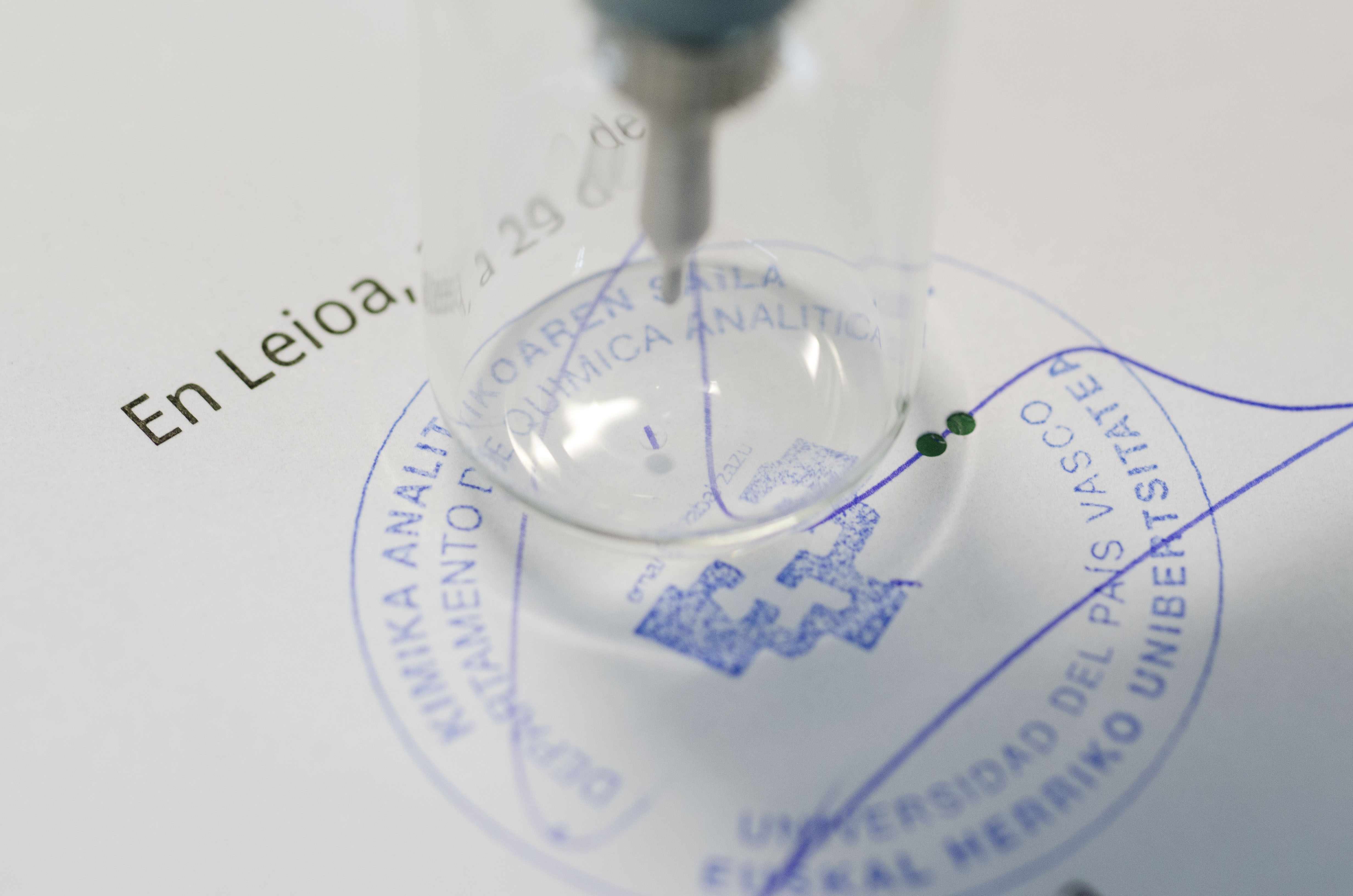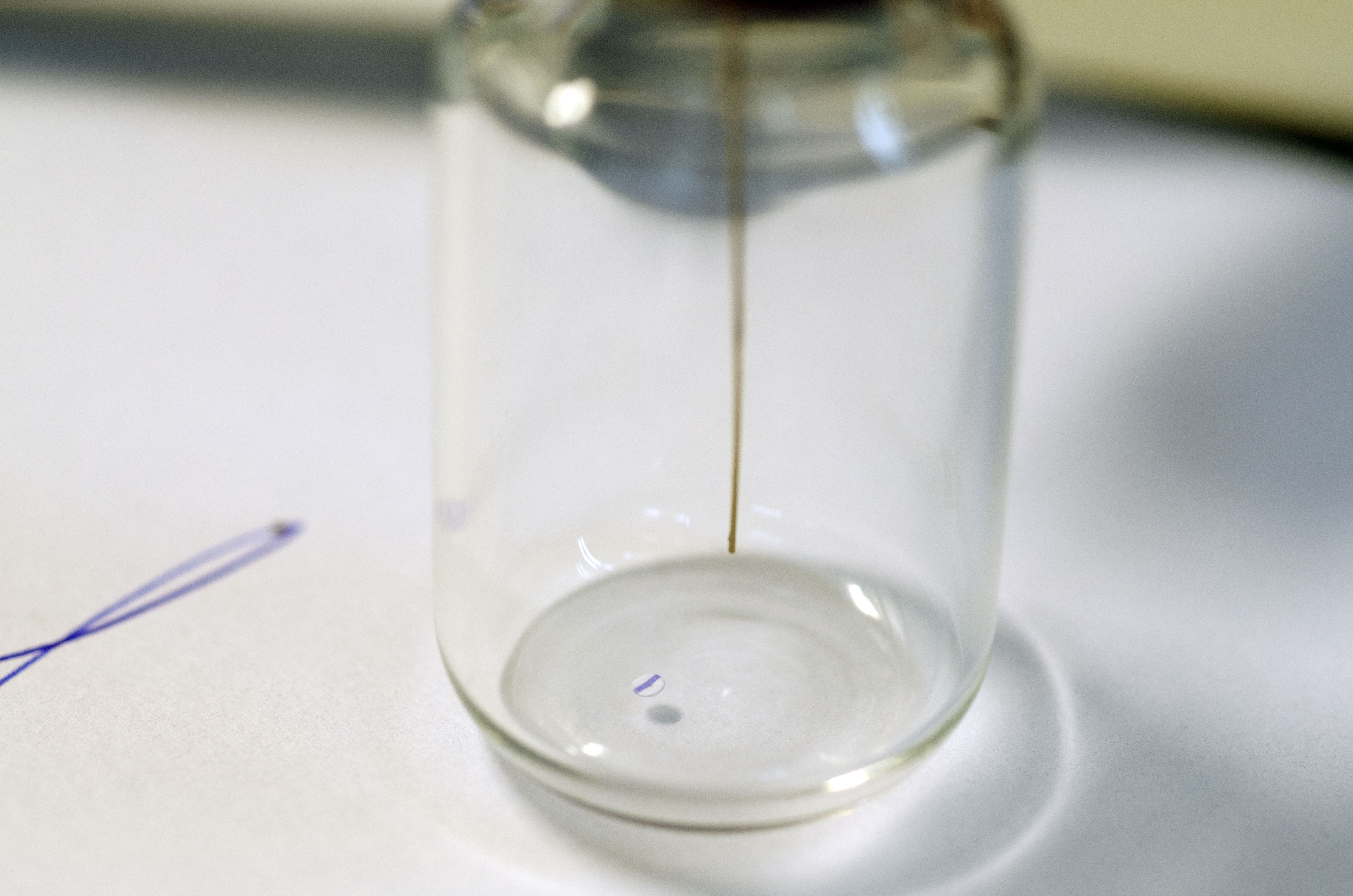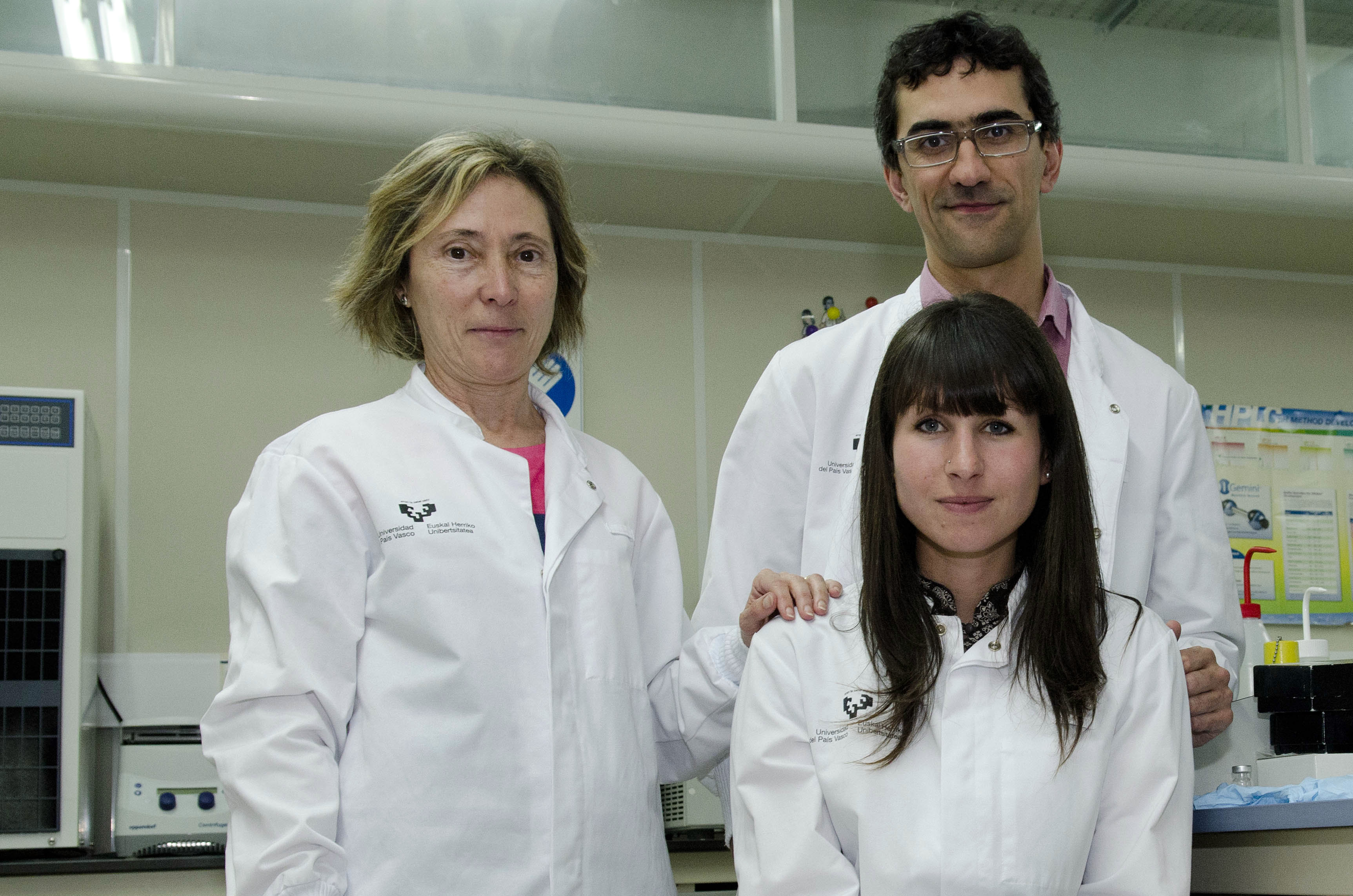When did you make your book entries? When was the settlement signed? When was the will made? These are often very tricky questions to answer and frequently arise in judicial contexts. In fact, the dating of documents is a key area in the field of forensic science. The UPV/EHU has developed the Datink method that determines the age of a document in a less invasive way than other techniques and is also able to date documents up to five years old.
Datink: dating inks
The method developed by the UPV/EHU-University of the Basque Country dates documents within a period of up to five years using a more accurate and less invasive technique
First publication date: 02/11/2015
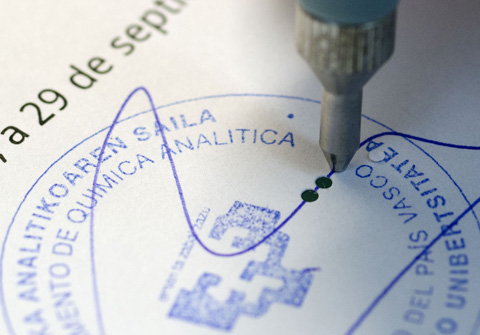
The UPV/EHU's research team —comprising the professor of Analytical Chemistry Rosa María Alonso, Dr Itxaso San Román of the Farmartem group of the Department of Analytical Chemistry, and Dr Luis Bartolomé of the Central Analysis Service of Bizkaia (SGIker)— has developed the Datink method that allows the period of time the ink may have remained on the paper to be determined and its age to be ascertained. But this technique is also able to overcome other stumbling blocks relating to the amount of ink deposited when writing and the type of paper used, as these variables hamper the dating of a document by means of traditional methods. What is more, the new technique reduces the number of punctures needed to analyse the writing on a document to just one.
The problems
Determining the age of a document to find out whether it is authentic is a task influenced by the type of paper on which it has been written, the pressure of the stroke -the amount of ink deposited when the writing was done- or even the technique used. Until now, document dating methods have been able to indicate whether the writing was relatively new (less than 90 days) or older (over two years), yet this chronological accuracy is insufficient in certain cases, above all in judicial ones.
Aware of these difficulties, the UPV/EHU team began to work on samples written for research purposes. To do this, they used BIC® ballpoint pens, one of the most common makes and, therefore, the most widely used in documents subjected to legal examination. Each document was produced at different moments using a different ink stroke pressure, factors that may alter the results and lead to dating errors. During the natural ageing process of each sample, which had a known age, the research team analysed the evolution in the various volatile components. Specifically, they focussed on the solvent known as 2-phenoxyethanol (PE), present in 80% of the inks in ballpoint pens of this type.
Itxaso San Román, Luis Bartolomé and Rosa María Alonso allowed the chemical compound to age under normal conditions, without ageing it artificially, which is what happens in other methods, and studied its evaporation speed. When analysing the kinetics involved in its disappearance, the research group established a pattern that links the state of the ink with the time that has elapsed.
More accurate, less invasive
After observing this natural evolution and once the base guideline had been established, the next challenge to be overcome was to check the viability of the method using spontaneously written documents whose exact age was known, such as diaries, laboratory logs and judicial evidence from judicial processes that had been closed. So the team used the same procedure as that used to analyse the samples produced for the research. And Datink also passed the test.
This technique managed to spot the age of the ink on documents written up to five years previously and with an approximation margin of about 20%. In other words, when applying this analysis procedure, the team can indicate whether the document was written 1,500 days previously (just over four years) with a margin of 300 days either way. Until now, the passing of time was detected only in a very general way, in other words, it was possible to determine whether the document was young (whether it was less than 90 days old) or old (more than 2 years).
So Datink has overcome some of the drawbacks graphology examination comes up against when ascertaining the age of a document by means of other methods. In these cases, significant dating errors occur because the type of paper used and the mass/quantity of the ink deposited influence the analysis.
Likewise, the team that has developed this new method has managed to obtain results using minimal amounts taken from the document. Unlike the large quantity of sample required by other traditional methods to age the compounds artificially and analyse them, the technique developed in the UPV/EHU labs allows the document to be dated using a single puncture and without altering the compounds. So Datink offers a more accurate, less damaging, less intrusive and less harmful result. Nevertheless, this methodology is a pilot experience that requires further in-depth research when it comes to evaluating the limits of the applicability of the various inks and makes of ballpoint pens, thus reducing its potential limitations.
As Luis Bartolomé pointed out, "what is interesting about this method is that it can more accurately determine the age of the stroke produced by the ballpoint pen. That is why it is very useful for documents that have been signed as it is possible to compare whether the body of the document, if it has been written by hand, is as old as the signature. Or else it is a very useful tool to date contracts, settlements, wills or other documents. Its use could have for example helped to determine the moment when the papers in the Bárcenas (corruption claims) case were written."
To conduct the research work, the Department of Analytical Chemistry had the collaboration of the company Investigaciones Forenses Documentales LEYAS and Magdalena Ezcurra holder of a PhD from the UPV/EHU. This company also supplied the knowledge about the current problems in dating documents, real cases that had been subjected to legal examination.
Bibliographical reference
I. San Román, L. Bartolomé, M.L. Alonso, R.M. Alonso, M. Ezcurra. DATINK pilot study: An effective methodology for ballpoint pen ink dating in questioned documents, Analytica Chimica Acta (2015), 892, 105-114


